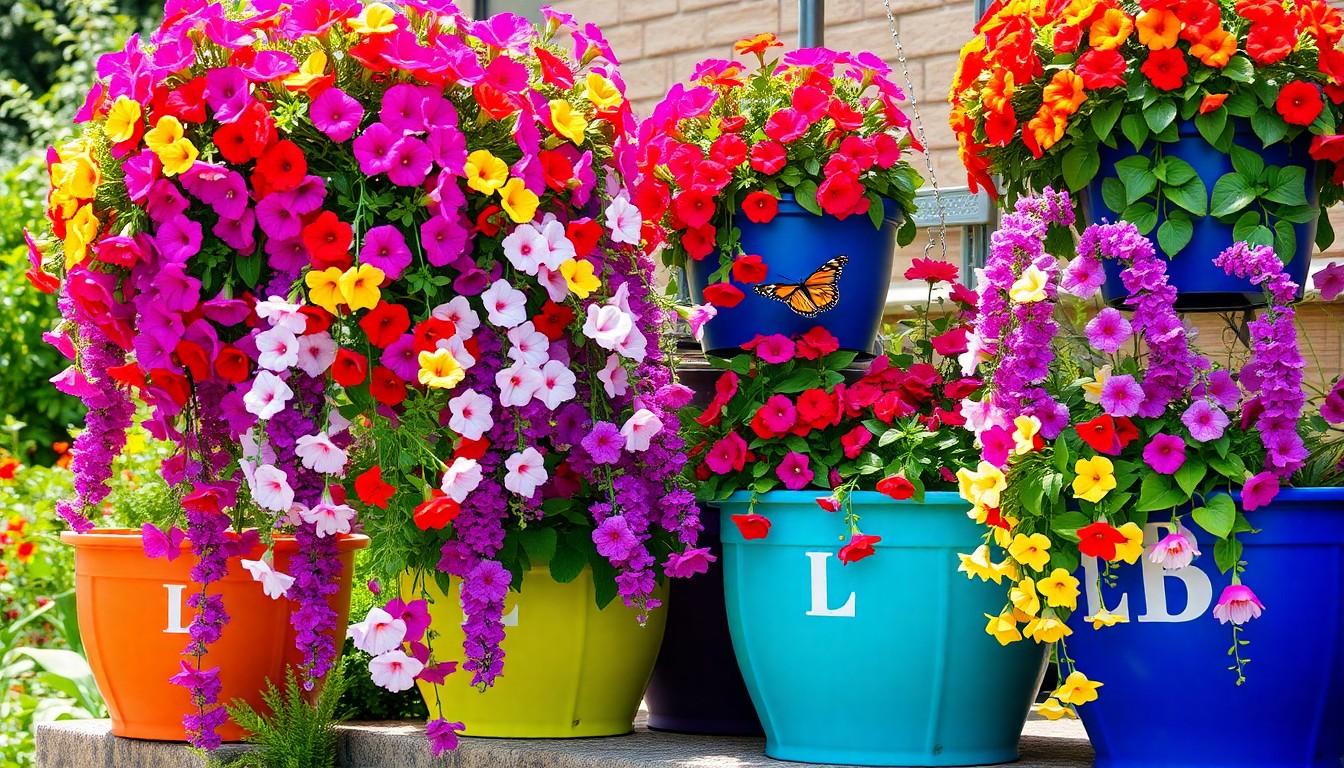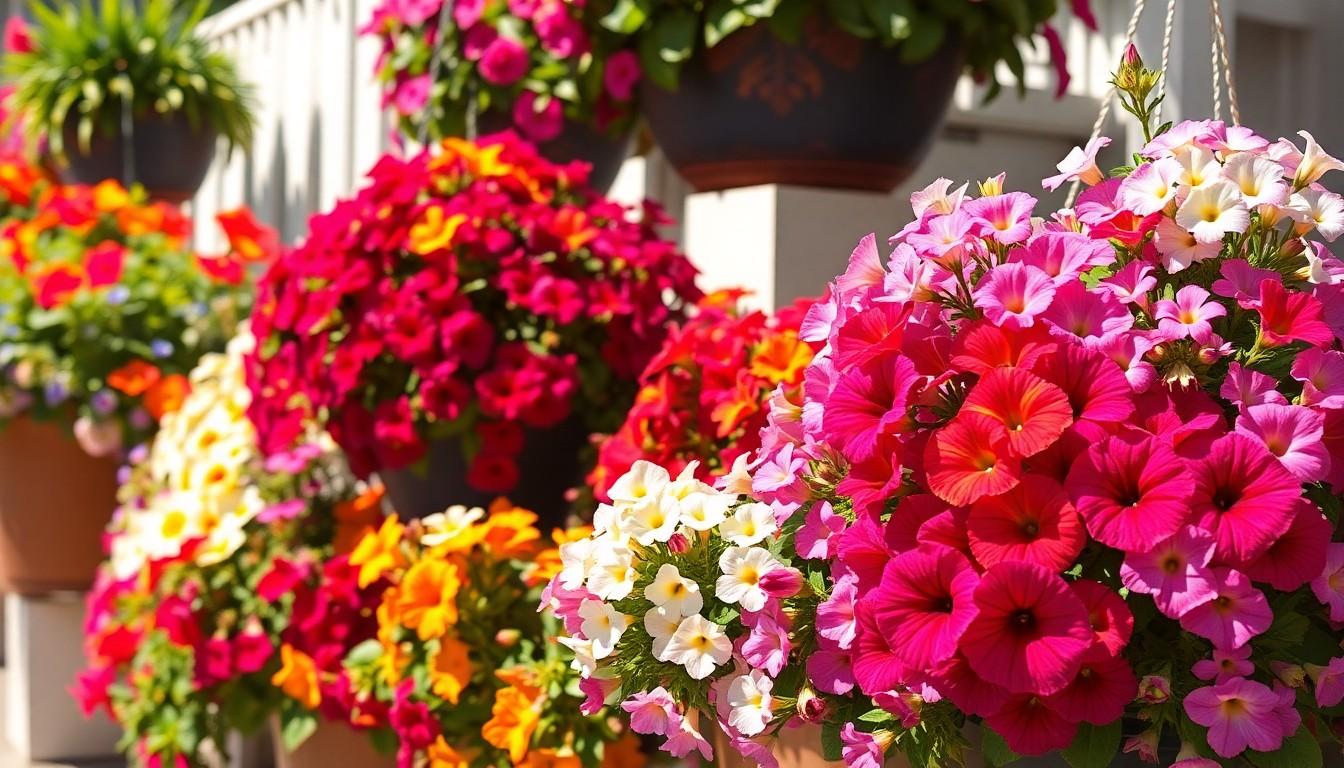Phone:
(701)814-6992
Physical address:
6296 Donnelly Plaza
Ratkeville, Bahamas.

Trailing flowers are the unsung heroes of the gardening world. With their graceful cascades and vibrant colors, they can turn even the dullest corners of a yard into a floral wonderland. Imagine a garden where blooms hang like nature’s confetti, creating a breathtaking display that leaves neighbors wondering if a professional florist moved in next door.
These charming plants aren’t just pretty faces; they’re also low-maintenance and adaptable, making them perfect for both seasoned gardeners and those who can barely keep a cactus alive. Whether draping over pots or spilling from hanging baskets, trailing flowers bring a playful touch to any outdoor space. So why not let these floral divas take center stage? After all, who wouldn’t want their garden to look like a scene from a fairy tale?
Trailing flowers, known for their cascading growth habit, add visual interest to gardens and landscapes. Varieties such as petunias, verbena, and creeping phlox thrive in containers and hanging baskets. These plants create stunning visual effects, draping elegantly over edges and spilling into pathways. Many trailing flowers bloom prolifically, offering an extended display of colors throughout the growing season.
Adaptability characterizes trailing flowers; they perform well in diverse climates and soil conditions. Some popular options, including calibrachoa and sweet potato vine, flourish in full sun, while others excel in partial shade. The low-maintenance nature of these plants appeals to busy gardeners, requiring minimal pruning and deadheading.
Incorporating trailing flowers into designs enhances space utilization. Gardeners often position them in vertical gardens or mixed beds, allowing for dynamic combinations with upright plants. Succulent varieties, such as sedum and echeveria, can also trail, introducing texture and dimension.
Planting trailing flowers contributes to eco-friendly gardening practices. Many of these blooms attract pollinators like bees and butterflies, supporting local biodiversity. Using native varieties encourages a balanced ecosystem, further enriching garden environments.
Consider the seasonal aspects of trailing flowers when planning. Early spring blooms can lead into summer displays, providing continuous color and interest. Recognizing the various growth habits and requirements enables gardeners to choose the right plants for their specific spaces. Whether filling window boxes, cascading over walls, or adding beauty to patios, trailing flowers effectively enhance outdoor areas.

Trailing flowers offer endless beauty and adaptability in gardens. Among the most favored varieties are petunias, verbena, and bacopa, each enhancing outdoor spaces in distinct ways.
Petunias exhibit vibrant colors that brighten up any display. They thrive in full sun and can grow in containers, window boxes, or hanging baskets. Gardeners appreciate their long flowering season, which lasts from spring until the first frost. Varieties such as wave petunias spread rapidly, creating lush cascades. With proper watering and fertilization, petunias flourish, attracting bees and butterflies.
Verbena stands out for its resilience and abundant blooms. These plants thrive in various soil types and withstand heat, making them ideal for sunny spots. Often used in containers and as ground covers, verbena infuses color with its clusters of small flowers. Varieties like trailing verbena spread elegantly over edges, creating stunning visual effects. Regular deadheading encourages new blooms, extending their flowering period.
Bacopa adds delicate charm to any garden setting. These trailing flowers perform well in partial shade, thriving in cooler areas. They produce tiny, cup-shaped blooms in shades of white, blue, and purple, enhancing the beauty of hanging baskets. Bacopa works effectively as a filler among other plants, offering cascading effects that soften lines. Consistent watering supports their growth, promoting lush, vibrant displays throughout the growing season.
Trailing flowers thrive best under certain conditions, ensuring vibrant growth and abundant blooms.
Soil texture plays a crucial role in the health of trailing flowers. Well-draining soil prevents waterlogged roots, which can lead to rot. Amendments like compost enhance nutrient availability. A pH level of 6.0 to 7.0 suits many varieties, promoting optimal nutrient uptake. Using sandy or loamy soil encourages root development, benefiting vigorous growth. Regular testing of soil composition ensures ideal conditions.
Sunlight exposure significantly impacts the flourishing of trailing flowers. Most varieties prefer full sun, requiring six to eight hours of direct sunlight daily. However, some varieties tolerate partial shade, adapting to different environments. Watering needs vary based on climate and soil type. Deep watering encourages strong root systems, while overwatering can cause issues. Checking soil moisture before watering helps maintain balance. Consistent care fosters vibrant, cascading displays in gardens.
Trailing flowers offer numerous advantages beyond their beauty. They enhance gardens and landscapes with vibrant colors and textures, creating visually stunning displays throughout the growing season.
Vibrant blooms of trailing flowers provide a dynamic focal point, elevating any outdoor space. Varieties like petunias and verbena exhibit various colors, from bold reds to soft pastels. Cascading forms allow these plants to spill over containers and hanging baskets, drawing the eye upwards and outward. Gardeners often use trailing flowers to soften hard edges or accentuate pathways. This versatility ensures a charming integration into diverse garden designs.
Many trailing flowers possess natural resistance to common garden pests. Varieties like creeping phlox often deter aphids and spider mites. This characteristic reduces the need for chemical interventions, promoting a healthier ecosystem. Certain trailing plants emit scents that repel unwanted insects, keeping gardens thriving. Their resilience enhances overall plant health, allowing gardeners to enjoy low-maintenance beauty in their outdoor spaces.
Caring for trailing flowers ensures vibrant growth and stunning displays. Regular attention to these plants promotes healthy blooms and lush foliage.
Pruning enhances the form and encourages bushier growth in trailing flowers. Annual pruning after blooming helps maintain shapes and remove dead or weak stems. Cutting back one-third of the plant stimulates new growth and even more prolific flowering. When pruning, use clean, sharp tools to prevent damage and disease. Regularly deadheading spent flowers also boosts blooming and prolongs the flowering period throughout the growing season.
Fertilization provides essential nutrients needed for thriving trailing flowers. A balanced, water-soluble fertilizer applied every four to six weeks supports robust growth and vibrant blooms. During active growth periods, opt for a fertilizer with a higher phosphorus content to enhance flowering. Soil tests can identify specific nutrient needs, allowing for targeted applications. Additionally, incorporating compost into the planting mix enriches the soil and improves moisture retention.
Embracing trailing flowers can transform any garden into a vibrant oasis. Their cascading blooms not only enhance visual appeal but also support local ecosystems by attracting beneficial pollinators. With their adaptability and low-maintenance nature, these plants are perfect for gardeners of all skill levels.
By following proper care techniques, including appropriate watering and fertilization, gardeners can enjoy stunning displays throughout the growing season. Whether in containers or hanging baskets, trailing flowers add charm and color, making outdoor spaces truly enchanting. It’s time to incorporate these delightful plants and watch gardens flourish with life and beauty.